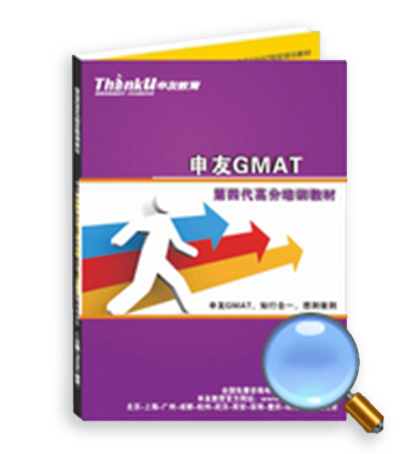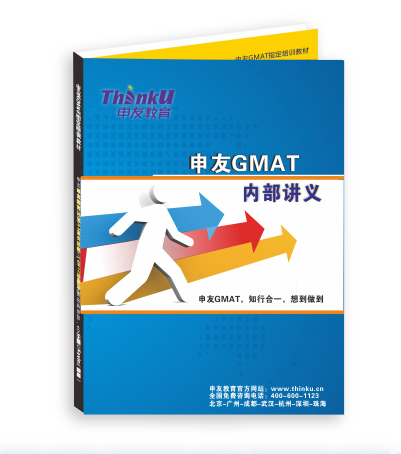Official18 托福阅读Passage2The Mystery of Yawning文本+题目原文+答案解析【雷哥托福】
2019-01-30 17:18:24 发布 来源:雷哥托福TPO18 托福阅读Passage2The Mystery of Yawning文本+题目原文+答案解析
The Mystery of Yawning
According to conventional theory, yawning takes place when people are bored or sleepy and serves the function of increasing alertness by reversing, through deeper breathing, the drop in blood oxygen levels that are caused by the shallow breathing that accompanies lack of sleep or boredom. Unfortunately, the few scientific investigations of yawning have failed to find any connection between how often someone yawns and how much sleep they have had or how tired they are. About the closest any research has come to supporting the tiredness theory is to confirm that adults yawn more often on weekdays than at weekends, and that school children yawn more frequently in their first year at primary school than they do in kindergarten.
Another flaw of the tiredness theory is that yawning does not raise alertness or physiological activity, as the theory would predict. When researchers measured the heart rate, muscle tension and skin conductance of people before, during and after yawning, they did detect some changes in skin conductance following yawning, indicating a slight increase in physiological activity. However, similar changes occurred when the subjects were asked simply to open their mouths or to breathe deeply. Yawning did nothing special to their state of physiological activity. Experiments have also cast serious doubt on the belief that yawning is triggered by a drop in blood oxygen or a rise in blood carbon dioxide. █Volunteers were told to think about yawning while they breathed either normal air, pure oxygen, or an air mixture with an above-normal level of carbon dioxide. █If the theory was correct, breathing air with extra carbon dioxide should have triggered yawning, while breathing pure oxygen should have suppressed yawning. █In fact, neither condition made any difference to the frequency of yawning, which remained constant at about 24 yawns per hour. █Another experiment demonstrated that physical exercise, which was sufficiently vigorous to double the rate of breathing, had no effect on the frequency of yawning. Again the implication is that yawning has little or nothing to do with oxygen.
A completely different theory holds that yawning assists in the physical development of the lungs early in life, but has no remaining biological function in adults. It has been suggested that yawning and hiccupping might serve to clear out the fetus’s airways. The lungs of a fetus secrete a liquid that mixes with its mother's amniotic fluid. Babies with congenital blockages that prevent this fluid from escaping from their lungs are sometimes born with deformed lungs. It might be that yawning helps to clear out the lungs by periodically lowering the pressure in them. According to this theory, yawning in adults is just a developmental fossil with no biological function. But, while accepting that not everything in life can be explained by Darwinian evolution, there are sound reasons for being skeptical of theories like this one, which avoid the issue of what yawning does for adults. Yawning is distracting, consumes energy and takes time. It is almost certainly doing something significant in adults as well as in fetuses. What could it be?
The empirical evidence, such as it is, suggests an altogether different function for yawning—namely, that yawning prepares us for a change in activity level. Support for this theory came from a study of yawning behavior in everyday life. Volunteers wore wrist-mounted devices that automatically recorded their physical activity for up to two weeks: the volunteers also recorded their yawns by pressing a button on the device each time they yawned. The data showed that yawning tended to occur about 15 minutes before a period of increased behavioral activity. Yawning bore no relationship to sleep patterns, however. This accords with anecdotal evidence that people often yawn in situations where they are neither tired nor bored, but are preparing for impending mental and physical activity. Such yawning is often referred to as "incongruous" because it seems out of place, at least on the tiredness view: soldiers yawning before combat, musicians yawning before performing, and athletes yawning before competing. Their yawning seems to have nothing to do with sleepiness or boredom—quite the reverse—but it does precede a change in activity level.
TPO18托福阅读Passage2 The Mystery of Yawning题目
Question 1 of 14: Which of the sentences below best expresses the essential information in the highlighted sentence in the passage? Incorrect choices change the meaning in important ways or leave out essential information.
A. It is the conventional theory that when people are bored or sleepy, they often experience a drop in blood oxygen levels due to their shallow breathing
B. The conventional theory is that people yawn when bored or sleepy because yawning raises blood oxygen levels, which in turn raises alertness
C. According to conventional theory, yawning is more likely to occur when people are bored or sleepy than when they are alert and breathing deeply
D. Yawning, according to the conventional theory, is caused by boredom or lack of sleep and can be avoided through deeper breathing
Question 2 of 14: In paragraph 1, what point does the author make about the evidence for the tiredness theory of yawning?
A. There is no scientific evidence linking yawning with tiredness.
B. The evidence is wide-ranging because it covers multiple age-groups.
C. The evidence is reliable because it was collected over a long period of time.
D. The evidence is questionable because the yawning patterns of children and adults should be different.
Question 3 of 14: The word “flaw” in the passage is closest in meaning to
A.fault
B.aspect
C.confusion
D.mystery
Question 4 of 14: In paragraph 2 why does the author note that there were physiological changes when subjects opened their mouths or breathed deeply?
A. To present an argument in support of the tiredness theory
B. To cast doubt on the reliability of the tests that measured heart rate, muscle tension and skin conductance
C. To argue against the hypothesis that yawning provides a special way to improve alertness or raise physiological activity
D. To support the idea that opening the mouth or breathing deeply can affect blood oxygen levels
Question 5 of 14: The word “triggered” in the passage is closest in meaning to
A. removed
B. followed
C. increased
D. caused
Question 6 of 14: Paragraph 2 answers all of the following questions about yawning EXCEPT
A. Does yawning increase alertness or physiological activity?
B. Does thinking about yawning increase yawning over not thinking about yawning?
C. Does the amount of carbon dioxide and oxygen in the air affect the rate at which people yawn?
D. Does the rate of breathing affect the rate at which people yawn?
Question 7 of 14: The word “periodically” in the passage is closest in meaning to
A. continuously
B. quickly
C. regularly
D. carefully
Question 8 of 14: According to the developmental theory of yawning presented in paragraph 3, what is the role of yawning?
A. It causes hiccups which aid in the development of the lungs.
B. It controls the amount of pressure the lungs place on other developing organs
C. It prevents amniotic fluid from entering the lungs.
D. It removes a potentially harmful fluid from the lungs
Question 9 of 14: Paragraph 3 supports which of the following statements about the developmental theory of yawning?
A. The theory is attractive because it explains yawning from the perspective of Darwinian evolution
B. The theory is unsatisfactory because it cannot explain the lung deformities of infants
C. The theory is questionable because it does not explain why a useless and inconvenient behavior would continue into adulthood
D. The theory is incomplete because it does not explain all the evolutionary stages in the development of yawning
Question 10 of 14: The word “empirical” in the passage is closest in meaning to
A. reliable
B. based on common sense
C. relevant
D. based on observation
Question 11 of 14: The study of yawning behavior discussed in paragraph 4 supports which of the following conclusions?
A. Yawning is associated with an expectation of increased physical activity.
B. Yawning occurs more frequently when people are asked to record their yawning.
C. People tend to yawn about fifteen minutes before they become tired or bored
D. Mental or physical stress tends to make people yawn
Question 12 of 14: Why does the author mention “soldiers yawning before combat, musicians yawning before performing, and athletes yawning before competing”?
A. To argue that just the expectation of physical activity can make some people feel tired
B. To explain how the view that people yawn because they are tired accounts for yawning before stressful situations
C. To support the view that yawning helps prepare a person for mental or physical exertion
D. To provide anecdotal evidence that conflicts with the experience of the volunteers in the study
Question 13 of 14: Look at the four squares █that indicate where the following sentence could be added to the passage. Where would the sentence best fit?
This, however, was not the case.
A. Volunteers were told to think about yawning while they breathed either normal air, pure oxygen, or an air mixture with an above-normal level of carbon dioxide.
B. If the theory was correct, breathing air with extra carbon dioxide should have triggered yawning, while breathing pure oxygen should have suppressed yawning.
C. In fact, neither condition made any difference to the frequency of yawning, which remained constant at about 24 yawns per hour.
D. Another experiment demonstrated that physical exercise, which was sufficiently vigorous to double the rate of breathing, had no effect on the frequency of yawning.
Question 14 of 14: The tiredness theory of yawning does not seem to explain why yawning occurs.
Answer Choices
A. Although earlier scientific studies strongly supported the tiredness theory new evidence has cast doubt on these findings.
B. Some have proposed that yawning plays a role in the development of the lungs before birth but that it serves no purpose in adults
C. New studies, along with anecdotal evidence, have shown that the frequency of yawning increases during extended periods of inactivity.
D. Evidence has shown that yawning is almost completely unrelated to the amount of oxygen in the blood and is unrelated to sleep behavior
E. Fluids in the lungs of the fetus prevent yawning from occurring which disproves the developmental theory of yawning
F. There is some evidence that suggests that yawning prepares the body and mind for a change in activity level
TPO18托福阅读Passage2The Mystery of Yawning真题解析
Question 1 of 14
正确答案:B
解析:高亮部分的主干意思是:人们无聊或困的时候会打哈欠,打哈欠可以让人提起精神,所以B正确。A没提到打哈欠,重要信息缺乏,错误;C的比较意义原文没有出现,错误;D的can be avoided原文没有提到,错误。
Question 2 of 14
正确答案:A
解析:对应第一段第二句,科学研究发现没有证据证明打哈欠和无聊、疲倦有联系,所以A正确。BCD都说有证据,错误。
Question 3 of 14
正确答案:A
解析:flaw“瑕疵,缺点,错误”,所以A fault正确。这里有another,说明是接着上一段继续陈述另一个____,而一段说的是这个理论的问题,所以这里应该是接着说问题。
Question 4 of 14
正确答案:C
解析:修辞目的题,首先找到修辞点所在的第二段第三句,句首的However提示这句话与前面一句的转折关系,前句说的是在打哈欠时、打哈欠后的确测到了一些生理上的变化,后面转折说:但哪怕是张开嘴、深呼吸,也会有这些生理变化,所以测到生理变化并不能说明什么问题。答案是C。
Question 5 of 14
正确答案:D
解析:trigger“引起”,所以D cause正确。这句里的while提示对比:如果该理论正确,那么呼吸二氧化碳含量高的空气会_____打哈欠,而呼吸纯氧会抑制打哈欠。和“抑制”意义相反的就是“引起、增加”。
Question 6 of 14
正确答案:B
解析:EXCEPT题,可以用排除法做,A的alertness or physiological activity做关键词定位至第二段第一句,正确,不选;B的thinking about yawning做关键词定位至第六句,只是作为附加的实验要求出现,但未提到单独这一条件是否会增加哈欠。所以B未提及,可选;C的carbon dioxide and oxygen做关键词定位至第六、七、八句,正确,不选;D的rate of breathing做关键词定位至倒数第二句,D正确,不选。
Question 7 of 14
正确答案:C
解析:periodically“规律地”,所以C regularly正确。
Question 8 of 14
正确答案:D
解析:以development theory做关键词定位到第三段前两句:打哈欠对肺的早期成长是有用的,但对成人来说没有作用,打哈欠和打嗝能帮助胎儿清理呼吸道。对应D选项。
Question 9 of 14
正确答案:C
解析:对应第三段倒数第二句:我们有充分的理由去怀疑这一理论,它没有解释打哈欠对成年人的意义。对应C选项。A态度错误,属于正向评价,与原文相反。B错在这一解释是针对打哈欠这一现象的,而不是肺部变形;D错在原文没有讨论打哈欠的进化过程。
Question 10 of 14
正确答案:D
解析: empirical“以观察或实验为依据的”,所以答案是based on observation“观察所得”。
Question 11 of 14
正确答案:A
解析: 对应到第四段开头的中心句,说到打哈欠是为活动水平的变化而做的准备。B原文没有提及,C偷换概念,原文第四段第四句说的是:实验发现志愿者在活动前15分钟会打哈欠,第四段最后一句提到:打哈欠与缺乏睡眠或困倦并无关系,所以D错误。
Question 12 of 14
正确答案:C
解析:修辞目的题,先看修辞点所在句子,发现只是单纯陈述一个例子,再结合前一句看,提到人们打呵欠既不是因为困也不是因为累,但准备接下来的脑力活动和体力活动时会打哈欠,所以答案是C。
Question 13 of 14
正确答案:C
解析:两个过渡点,转折连词however和代词this,B点之后的if作出假设,而C点之后的in fact给出了转折,所以答案是C。之前说如果……,紧接着提到不是这么回事,然后in fact给出解释。
Question 14 of 14
正确答案:BDF
解析:B对应原文第三段第一句,正确。D对应原文第二段、第四段的最后一句,正确;F对应最后一段倒数第三句,正确。
A错在原文没有提到早期的实验支持tiredness theory,无中生有,错误;C与原文相反,原文第四段提到人们会在活动前打哈欠,而C说长期不活动会增加打哈欠的频率,错误;通过E中的fluid对应到第三段,但没有对应的信息,没有提到肺部的液体会阻止胎儿打哈欠,错误。
全套TPO阅读原文+题目文本+答案解析手册(合计1300页文档),在雷哥托福微信公众号获取
雷哥托福上课详情请咨询老师
1、请联系官方QQ:2250281936;
2、请联系官方个人微信号:toefl12345;
3、请咨询官方电话:400-6021-727;
【使用提示】
1、雷哥托福在线直播课,不限地域,全球考生均可报名参与。
2、获取更多托福信息,请关注雷哥托福微信公众号:toeflgo






 400-1816-180
400-1816-180
















































































 请填写手机号
请填写手机号










 12G备考资料
12G备考资料
 直播
直播



















 分享成功
分享成功









 托福预测|2020年1月11日&12日托福考试机经预测最全资料版!
托福预测|2020年1月11日&12日托福考试机经预测最全资料版!
























草莓小菇凉:说的非常好,十分有道理,棒棒棒!
06-08 15:44:55